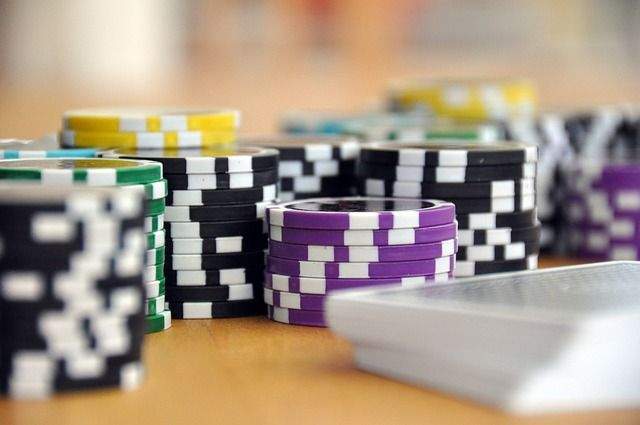Game addiction or ludopathy and different types of players

- 2960
- 777
- Jeffery Jones
Ludopathy is an impulse control disorder in which the affected feel.
In this way, the game can become a Addictive behavior, As with tobacco, with alcohol or with any other type of drugs. Pathological players get out of control and are unable to stop playing, even when they want to do it. The reason is that they have a deeply entrenched habit that they feel unable to detach.
Another common aspect between The pathological game and addictions is that they are the people around the addict (family, friends, co -workers, etc.) The first to realize that there is a real problem. Meanwhile the pathological player will continue to deny that something goes wrong.
Content
Toggle- Ludopathy diagnosis
- Types of players
- 1. Social player
- 2. Professional player
- 3. Problematic player
- Pathological Player
- Phases in game development
- 1. Profit phase
- 2. Loss phase
- 3. Phase of despair
- Bibliographic references
Ludopathy diagnosis
To diagnose a person as Pathological Player It must be taken into account that he carries out a harmful game behavior characterized at least for four of the following symptoms:
- Frequent concern for playing or getting money to play.
- More money is frequently played or for longer than the one he had planned.
- There is a need to increase the magnitude or frequency of bets to achieve the desired excitation.
- Restlessness or irritability when you can't play.
- Repeated losses of money in the game and return the next day to try to recover.
- Repeated efforts to reduce or stop the game.
- Frequently, the game takes place when the person is expected to be fulfilling their social or professional obligations.
- Sacrifice of some important social, professional or recreational activity to play.
- Game maintenance despite the inability to pay debts and despite social and professional problems originated by the game.
Types of players
It seems useful to distinguish different types of players according to the behaviors that carry out. According to this criterion, the following are proposed:
1. Social player
He is the one who plays occasionally or regularly, does it by entertainment, satisfaction or within the framework of a social interaction, by leisure or pleasure, but it has total control over that behavior and can abandon it or stop issuing it when you want. This ability seems to be a combination of three factors (Custer, 1984): 1) the result of bets does not influence personal self -esteem; 2) Other aspects of life are more important and reinforcing, and 3) rarely a great gain is experienced (gains and losses are generally modest). Pathological players have precisely the opposite characteristics.
2. Professional player
The characteristic in these cases is that The game is a way of life, that is, a profession. They participate in games where skill is important (for example, in letters, in billiards, etc.) or cheat to win. They are people who bet after making a weighted calculation and not taken by passion.
3. Problematic player
Carries out a frequent or daily game behavior, with a habitual expense of money that on occasion, for excessive, it carries problems, but that does not reach the gravity of the pathological player. He has less control over his impulses than the social player, and the increase in the regularity of the game requires him to spend more intensity and a longer dedication time, although he usually regularly attends his family and work, leading a normal life. They are considered people at high risk of becoming a pathological player.
Pathological Player
Is characterized by a Emotional dependence on the game, a loss of control with respect to it and an interference with the normal functioning of everyday life. The result is an uncontrolled game that responds to the following guidelines:
- A frequency of game behavior and/or investment in extraordinarily high time and money.
- The bet of an amount of money greater than the planned.
- Recurring thoughts and compulsive desire to play, especially when they have lost.
- The subjective need to play to recover lost money.
- The repeated failure in the attempt to resist the impulse of playing. From a cognitive perspective, irrational optimism and superstitious thought are cognitive distortions present in ludopaths.

 Mental illness aging faster, according to a study
Mental illness aging faster, according to a study Phases in game development
According to Custer (1984), the development of the pathological game follows a uniform pattern. The game usually begins in adolescence, although it can do it at any age, passing from the first bets to the total loss of control an average of five years (with limits between one and twenty years). The player then passes through three phases:
1. Profit phase
At first, occur frequent episodes of obtaining awards, which lead the player to greater implication In the game and to believe that he is an exceptional player. Such earnings produce great excitement and expectations that you can even earn more money. In this phase it can be maintained from several months to several years.
2. Loss phase
Given the optimism that characterizes the player in the previous phase of profit, with the aim of achieving greater awards increasingly risk more, but begins to lose money, losing the more the more I bet. Once the person has become a regular player, the most important factor that will make it possible to become a pathological player is their loan accessibility.
The "Hunt" phenomenon consisting in the player to play more and more to try to compensate for their debts and loses more and more and these are greater. Now he doesn't play to win but to recover the lost. Loans, salary spent at stake, small robberies or scams, family and work relationships are some of the consequences that follow, and that are going to aggravate even more the problem by not getting money and losing the one that has already achieved in extremis.
This is when the player is forced to discover or confess his problem to the family, friends, etc., And decides, and even promises that he will stop playing. This lasts a short time and soon, once money was achieved, he returns to play again.
3. Phase of despair
In this phase the game reaches great intensity in the player, living this one just to play. Gets totally misguided with family, friends and work. This requires increasing risks, being involved in greater financial and legal problems. At this point, the vast majority of pathological players have already lost their job. They are increased nervousness and irritability, they have sleep problems, they eat little and their life is not very pleasant. They feel psychologically and physiologically exhausted; In sum, desperate.
All this produces in the player a state of panic caused by his enormous debts, the desire to return the money quickly, the alienation of his family, when not rupture or divorce, and friends, the development of a negative reputation, depression or problems of depression or Suicide ideas and a nostalgic desire to recover those first days of gain in the first phase. At this point perceives few alternatives: suicide, jail, escape or seek help.
Recently, Lesieur and Rosenthal (1991) have added a fourth: Phase of hopelessness or abandonment. In this the players assume that they can never stop playing. Even knowing that they will not win continue to play; They need to play to play, play until they are exhausted. The prognosis is currently very negative, because to its Compulsive game behaviors joins the conviction that it is useless to do anything to try to solve it.
Bibliographic references
- Echeburúa, e. (2013). Game addiction and ludopathy. 21st century of Spain editors.
- Estévez, a., & Herrero, J. (2015). Ludopathy: Review of literature and proposal of a cognitive-behavioral treatment model. Journal of Psychopathology and Clinical Psychology, 20 (1), 15-28.
- Gómez-Moreno, c., & Fernández-ias, I. (2014). Ludopathy: an updated review. Magazine of Psychiatry and Mental Health, 7 (4), 201-211.
- Jiménez-Murcia, s., & Fernández-Aranda, F. (2013). Ludopathy: epidemiology, comorbidity and diagnosis. Neurology Magazine, 56 (Suppl. 1), S3-S8.
- Merino-Barragán, e., & Álvarez-Moya, and. (2015). Ludopathy: characteristics, diagnosis and treatment. Addictions, 27 (2), 97-106.
- « Capgras syndrome and Cotard syndrome, two strange disorders
- Serotonin The hormone of happiness and an effective antidepressant »

